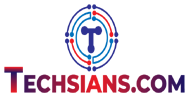Starting a career in User Experience (UX) and User Interface (UI) design at this time is exciting. UI/UX Designer is one of the best jobs in 2022 by glassdoor.com based on factors like job satisfaction, earnings potential, and job openings.
One can take various routes to become a UI/UX designer. The key to getting hired is often demonstrating that you have the necessary skills, which you can gain by going through UX design course available online. Today, we will be discussing essential skills that will help you become UI/UX Designer.
Technical skills required to become a UI/UX Designer in 2022
Aspiring UI/UX designers should possess these fundamental technical skills:
UX research expertise
UX designers should be able to conduct research and analysis to compile qualitative and quantitative data about users. For example, observing users in their natural environment or under test conditions, conducting focus groups, issuing surveys, and conducting user interviews (open-ended or structured). In addition, you should be able to choose participants for focus groups, record the results of a largely unstructured discussion, and create sufficiently open-ended survey questions that don’t compel respondents to give a detailed response. Finally, you must be familiar with usability test techniques like heat maps and card sorting.
Prototyping and wireframing skills
A website’s wireframe is a layout that depicts the interface elements that will be present on its most important pages. To create the simplest, most effective user experience, UI/UX designers choose specific features to display, which to skip, where to position them, and how to present them visually. You must be able to diagrammatically represent user interface elements like images, CTA buttons, and menus. Mockups, rough models of a product made to test a concept or process, will be the focus of your work after the wireframes have been approved. A high-fidelity design, or final mockup of the product that closely resembles the finished product once it is coded and implemented, will be produced in the final stage. Wireframes and prototypes need to be produced quickly and effectively by UI/UX designers.
UX writing skills
UX writing is a specialized field. Microcopy, the words we read or hear when using a digital product, is a key component of website navigability and the overall experience. UX writing skills can elevate your ability to design and craft a good user experience. Concise, practical, and reflective of the brand’s values and tone, effective UX writing is concise.
Ability to communicate visually
Although it’s still important, visual design in UX is much more than just how a website looks and feels. For example, consider standardized UI components like the playback button or even the hamburger menu. Users who see these icons immediately recognize what they stand for and can click on them. In addition, lessening the need for written instructions and utilizing visual cues to direct users and assist them in understanding where to go next, how to find the information they require, and what other actions they can take are all components of effective visual communication skillset.
Interaction Design expertise
Successful digital products depend on user-friendly interaction design, making it easy for users to complete desired tasks. A user’s interaction with a product is influenced by aesthetics, motion, sound, and physical space (where and how the product is used). Therefore, user flows, information accessibility, and the efficiency of screen layout should be your obsessions.
Coding abilities
UI/UX designers don’t need to be experts in coding, but they should know the fundamentals of HTML and CSS and be able to make simple website changes. This is crucial because you’ll be testing and refining website features quickly, and you’ll need to be able to make small changes to the code on your own. You can work more effectively with software engineers if you have coding knowledge and skills because you can produce more realistic designs and intuitively understand the limitations of software architecture.
Analytical skills
Usability testing isn’t completed until a product or feature is produced. As a UI/UX designer, you are responsible for continuously monitoring product usability data, looking for ways to improve existing products, and using data to infer new product ideas. In addition, you must test any apps or websites you develop. You can assess the efficacy of your design with the aid of numbers, percentages, and ratios.
Information architecture skills
For users to find content, it needs to be properly organized, labeled, and structured. Information architecture includes everything from the layout of your web pages to the conversational paths used by chatbots. In complex software applications, UI/UX designers consider the user’s need for product education and knowledge, which involves a content strategy.
Soft skills that UI/UX Designers must have
Collaboration skills
Being a UI/UX Designer, you will frequently contact senior management or leadership. And working as a team will help you get exposed to various aspects of thinking, and let you take in feedback or suggestion to create the best possible product.
Presentation and communication
Collaboration and communication are mutually beneficial. Additionally, you’ll need to communicate with people outside of your team. Strong communication abilities enable you to enthusiastically present your designs to stakeholders and collect more useful customer data during user research. Effective visual and written (UX writing) communication are frequently necessary for good UX.
Time management and prioritization
Companies frequently seek UX designers who can prioritize tasks, manage their time, and attend to the most urgent needs first. Over a day, you might work on several projects (or components of the same project). You’ll position yourself for success in UX design if you practice remaining organized and adaptable in your current tasks.
Conclusion
UI/UX Designers are in demand today, with highly rewarding career options in tech companies like Google, Microsoft, Apple, VISA, Adobe, Tesla, and many more. This article has helped you become more aware of the UI/UX Designer role and the required skills.

